When a somatic cell (that is, a cell that isn't a gamete) in an animal's body divides, it makes an exact copy of itself via a process called mitosis.
Somatic cells in plants also divide via mitosis, but we will focus on animal cells here. The main differences to know are that plant cells don't have centrosomes, and a structure called a cell plate separates daughter cells during cytokinesis.
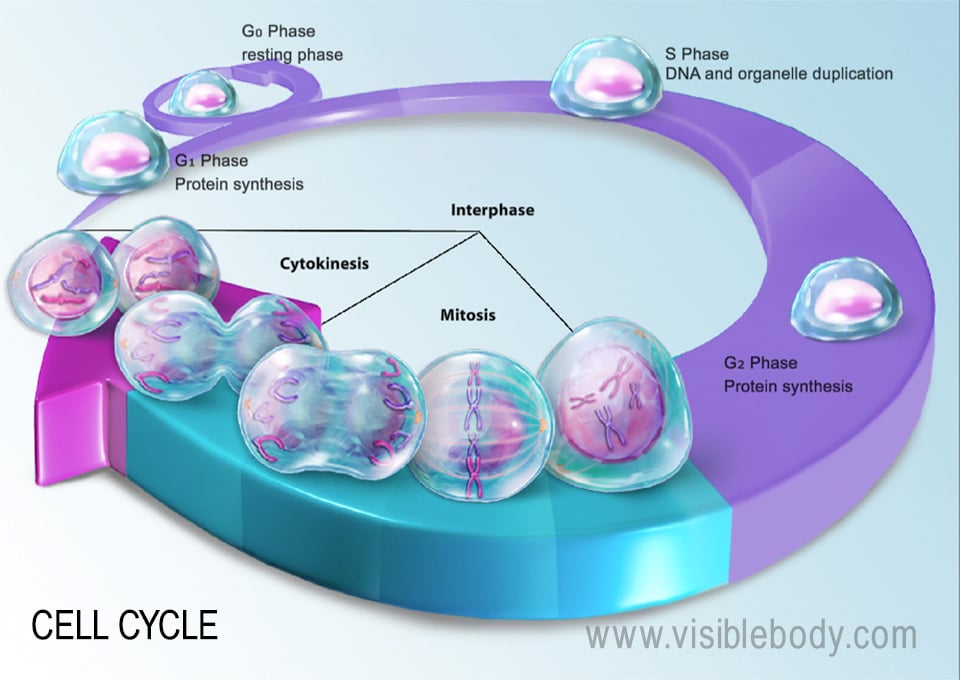
Like other living organisms, cells have a life cycle. It consists of a series of phases, one of which is mitosis. Cells spend most of their life in interphase. Specifically they go about their normal functions in the G, or non-replicative phases.
The timing of the cell cycle is regulated by specialized proteins inside and outside the cell. They “check in” at various intervals to make sure that the cell cycle is proceeding properly. Malfunctions of this control system can cause serious problems, like cancer.
When a cell is ready to make a copy of itself, it first has to copy all its DNA. That's what happens during the S phase of interphase.
DNA is usually tightly coiled around proteins called histones. During DNA replication, DNA unwinds from around the histones and an enzyme called DNA helicase opens up the helix structure on a segment of DNA. It breaks the bonds between the nitrogenous bases like a zipper, leaving a replication fork behind it. Then, another enzyme called DNA polymerase creates a new complementary strand for each strand of the DNA. This happens in a slightly different way on the leading (5'-3') strand vs the lagging (3'-5') strand but the end result — a new segment of DNA — is the same.
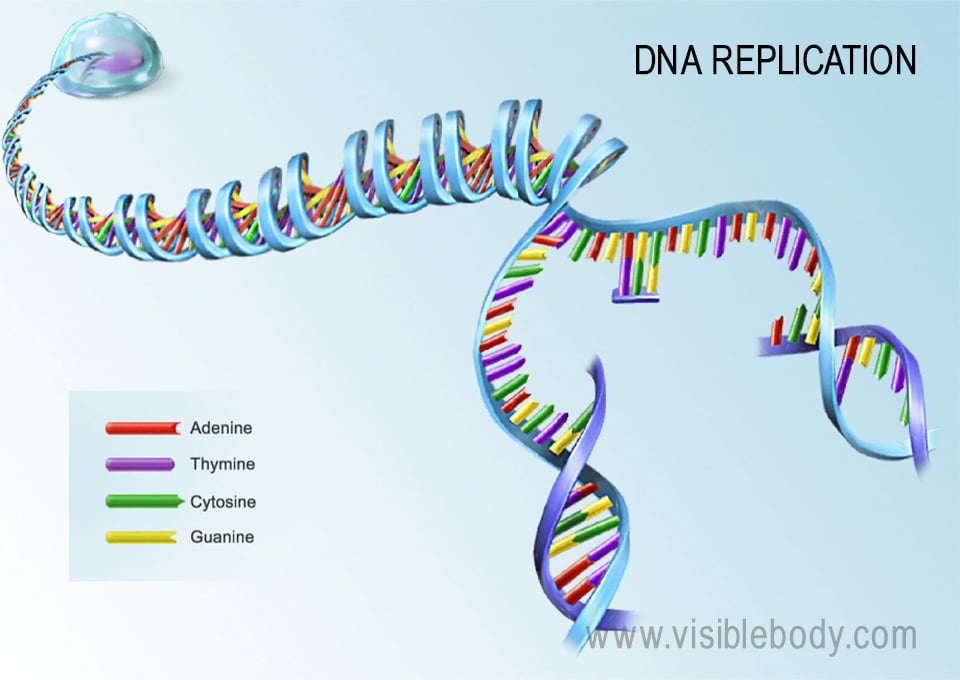
Once the DNA is replicated, it's time for the G2 phase of the cell cycle, when the cell synthesizes proteins and grows in preparation for mitosis.
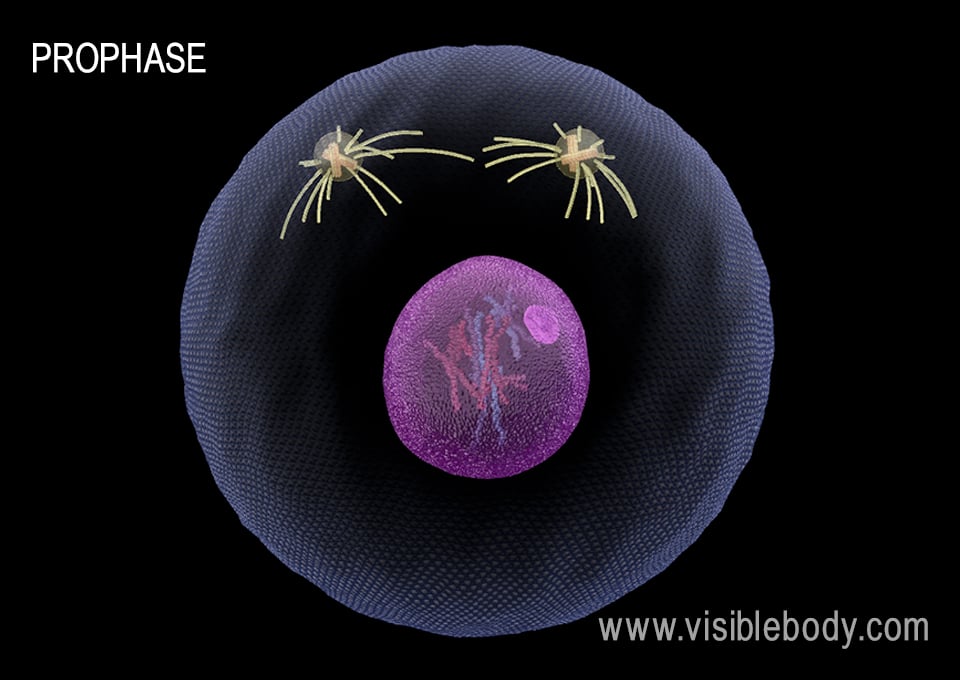
With G2 complete, it's time for mitosis to begin! Mitosis happens in four phases (or five, if you count prometaphase as its own phase). Prophase is the first of them, and it involves a lot of “prep work” for the rest of the process. DNA, which is usually stored as spaghetti-like chromatin, coils up tightly. Pairs of replicated chromosomes are called sister chromatids, and the chromatids are joined in the middle by a centromere.
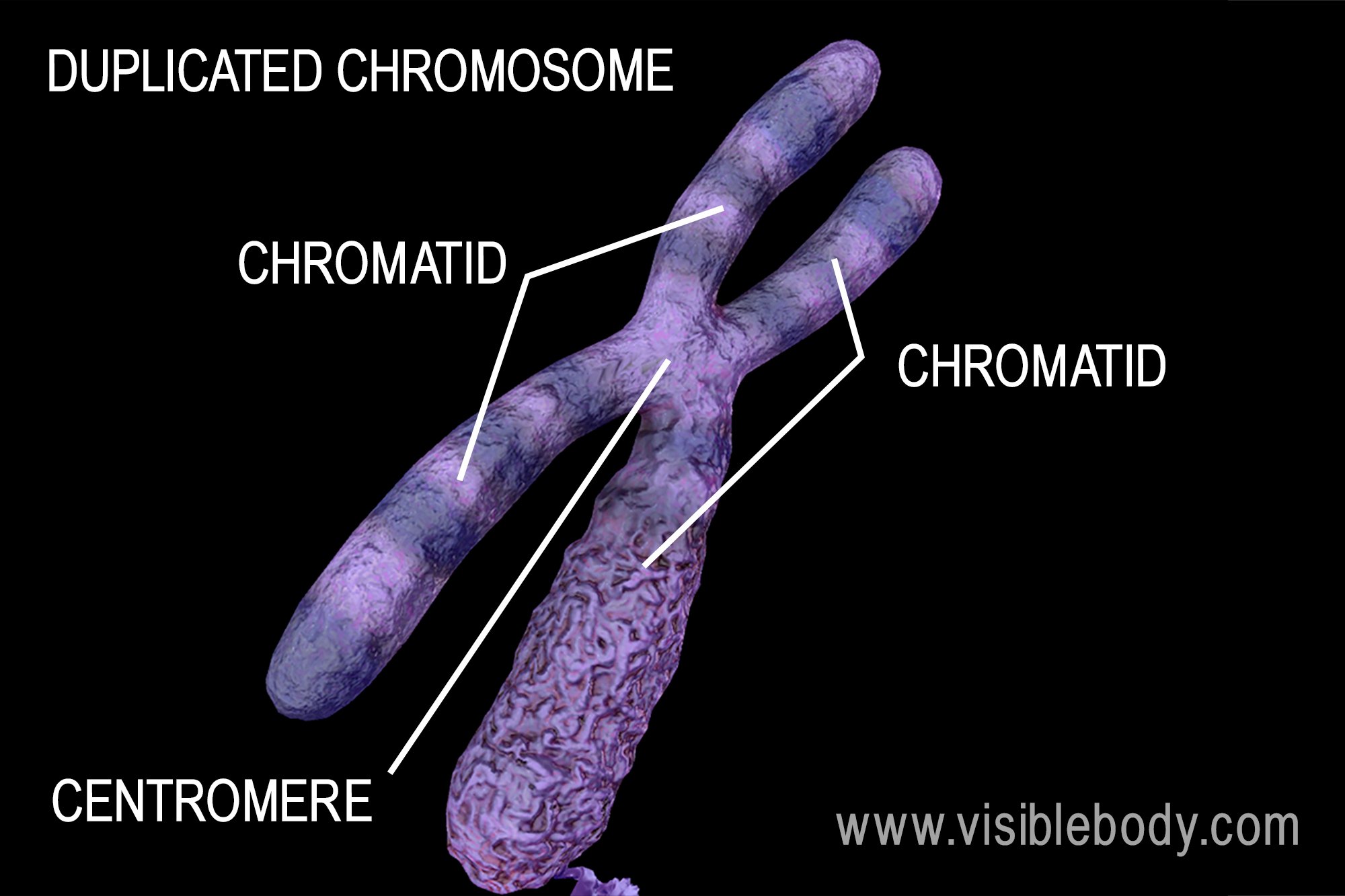
Next comes prometaphase, which is sometimes considered to be part of prophase and sometimes considered its own phase. During prometaphase, the nuclear envelope that usually surrounds the cell's nucleus dissolves, along with the nucleolus. Centrosomes migrate to each end of the cell and the centrioles within the centrosomes sprout spindle fibers (microtubules). Some spindle fibers attach to chromosomes' kinetochores.
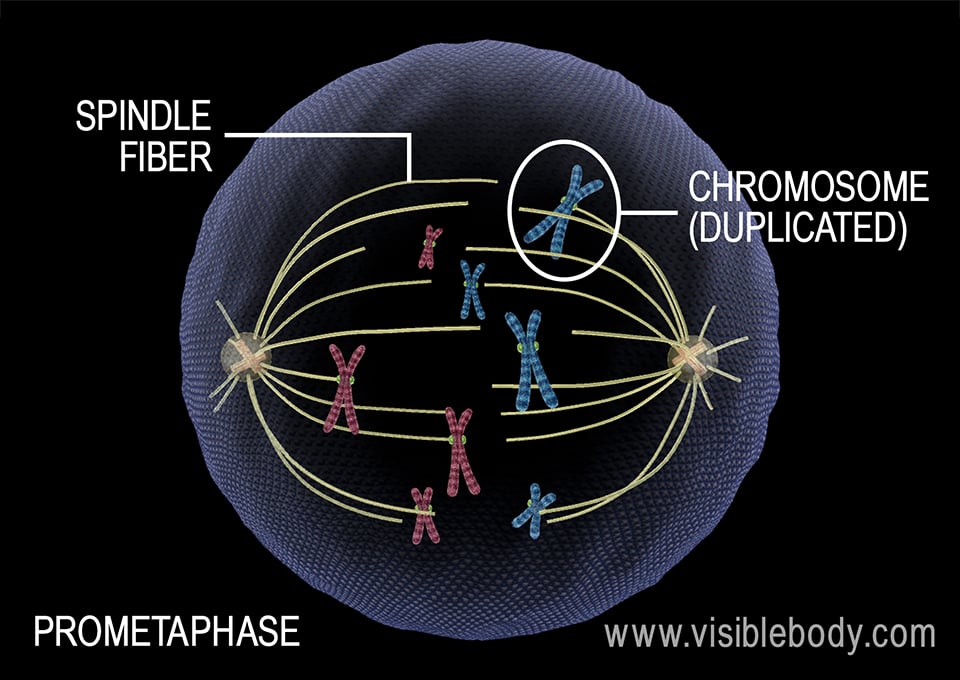
During metaphase, the mitotic spindle finishes forming and chromosomes are lined up in the middle of the cell.
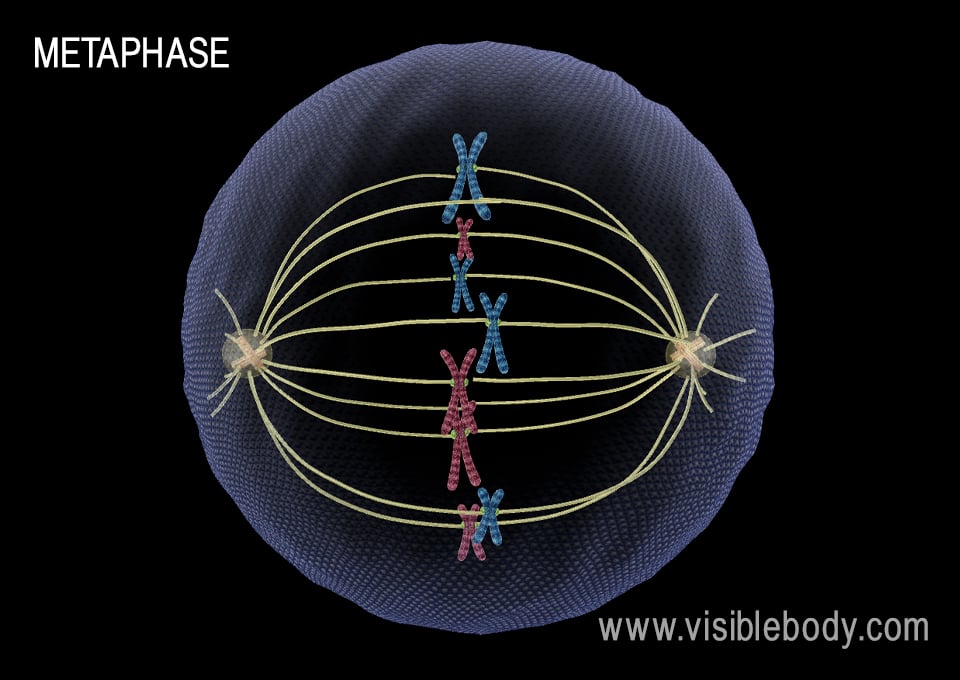
In anaphase, the chromosomes in the center of the cell are pulled apart at their centromeres by the spindle fibers. Sister chromatids are separated and one from each pair ends up at each end of the now-elongated cell.
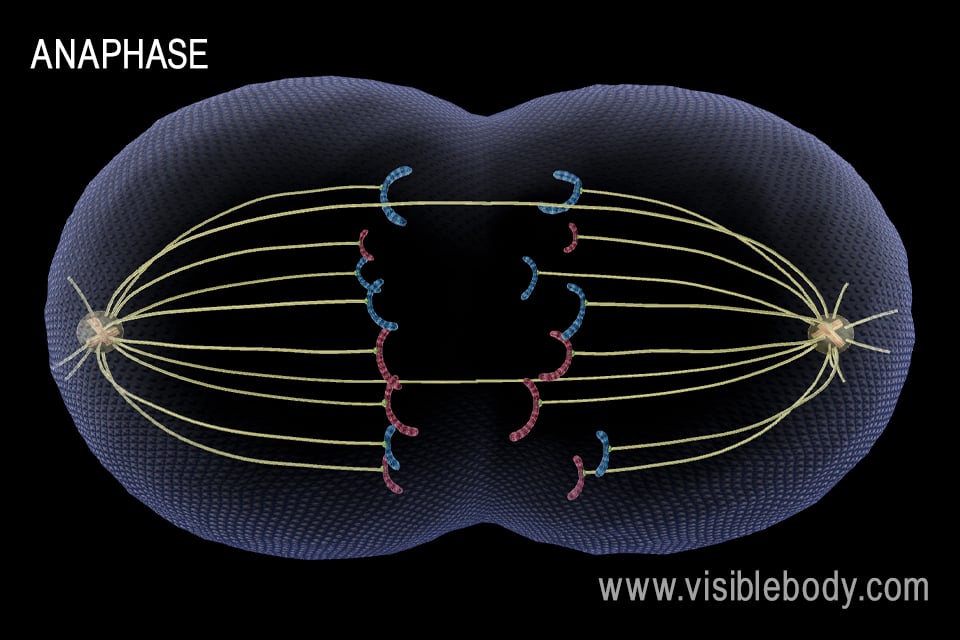
During telophase, the chromosomes at each end of the cell relax back into chromatin. A new nuclear envelope forms around each group of them, and a nucleolus completes each new nucleus. The mitotic spindle is disassembled.
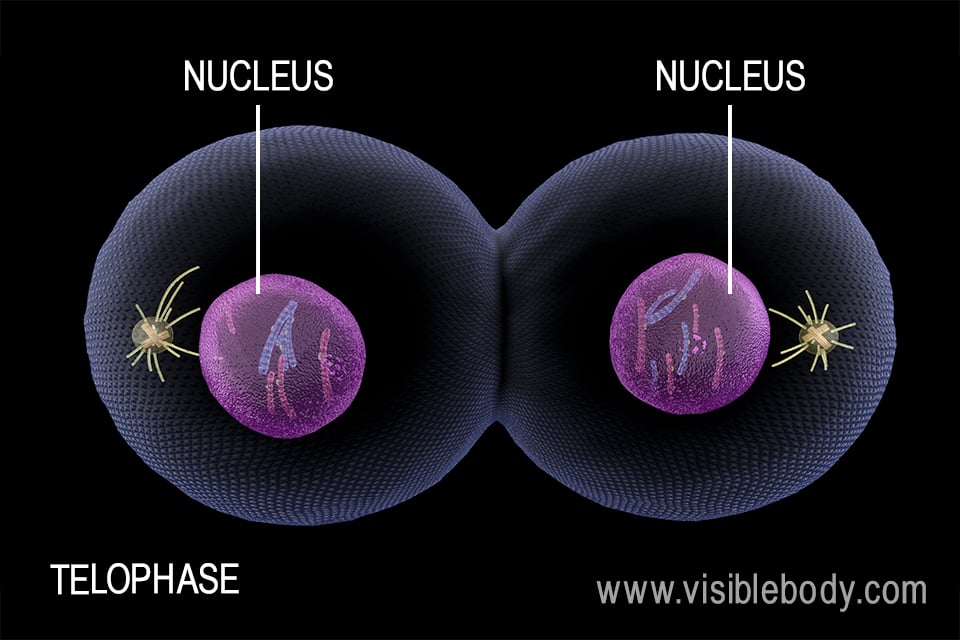
Then, it's finally time for cytokinesis – that is, the division of the cytoplasm. The center of the elongated cell pinches inwards, and the two nuclei move away from each other, separating the parent cell into two new daughter cells.
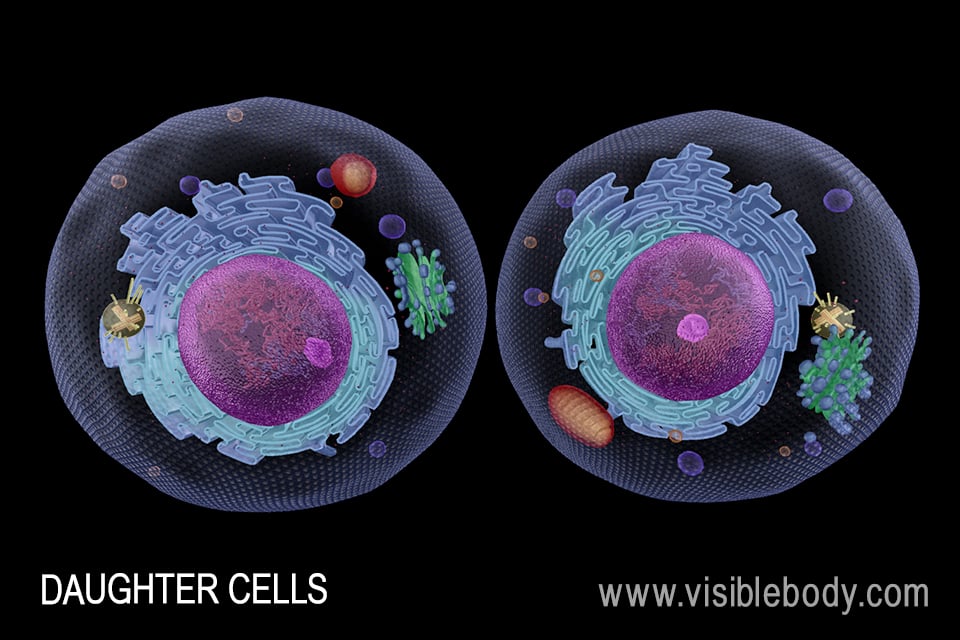
After mitosis is complete, you can see that the original cell has divided into two genetically identical daughter cells. In humans, these cells are diploid, with 46 chromosomes.
These new cells start their lives in G1 of interphase. They grow, synthesize proteins, and make new organelles. Then they enter G0 until it's time for them to divide and make daughter cells of their own.
For review, here's a handy chart summarizing the cell cycle and the phases of mitosis in animal cells!
The Cell Cycle (Diploid somatic cell)
|
Interphase |
G1 (growth, protein synthesis, organelle production) G2 (protein synthesis, preparation for mitosis) |
|
Mitosis |
Prophase (chromosomes condense) Prometaphase (mitotic spindle forms) Metaphase (chromosomes line up) Anaphase (sister chromatids separate) Telophase (daughter cells begin to separate) |
|
Cytokinesis |
Daughter cells finish separating |
When you select "Subscribe" you will start receiving our email newsletter. Use the links at the bottom of any email to manage the type of emails you receive or to unsubscribe. See our privacy policy for additional details.